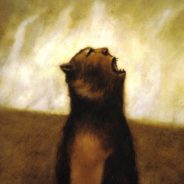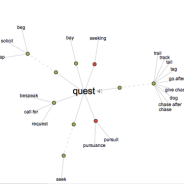Writing Exercise #27: What Am I Here For? (Part 1 of 2)
When I trained in healing imagery in San Rafael, with the Academy for Guided Imagery, I learned, on the last day of my training, an imagery exercise that can be used for the discovery of deep purpose. To be honest, when we were first introduced to the exercise, I, along with a friend who I was there with, thought the exercise seemed, well—almost silly. Too simple to be useful, I thought. Or too something. I was wrong. This exercise, which we proceeded to practice in small groups, proved to be surprisingly powerful. Since then, I’ve introduced this exercise to a number of patients. And I’ve begun to see that, at least some of the time, this exercise can point a person toward something. It has the potential to get at something deeper than short-term goals, deeper than the job at which we work, deeper than any salary or accolades we might receive for that work. It has the potential to move a person toward certain core kinds of questions—questions particularly relevant if and when a person finds themselves facing a life-threatening or life-altering illness, or when a person finds themselves facing a life-altering loss. (And one of the things an examination of these questions can do, I’ve noticed, is help a person feel calmer and more at peace—get a glimpse of the bigger picture as it were—and this itself can mitigate a stress response and, in the process, augment healing. Lawrence LeShan, who has been called the father of mind-body medicine, proposes in his book, Cancer As a Turning Point, that getting in touch with one’s purpose—or what he calls zest—can have a significant and salutary effect on the immune and healing system.) What really matters? What will matter when it’s all said and done? I attended a Jesuit college. One of my professors at that college, Father Nesbitt, a Jesuit priest and a the teacher of my first theology class as a freshman, once told us that the question to ask ourselves when we wake in the morning and first look in the mirror to wash our face is this: What am I here for? This is an exercise that looks at that question. So—the exercise, which I’ve translated into a writing exercise: You begin by folding a plain piece of paper in half and then half again, so that when you re-open the piece of paper you have four rectangles. At the top of the first rectangle you write the first heading: WHAT I LIKE/ WHAT I LOVE Then beneath this heading you make a list of all the things that you like and love. These can be small things or big things. Chocolate? Rain? The color periwinkle? At the top of the second rectangle you write the second heading: GIFTS AND TALENTS Here you make a list of all those things that you happen to be good at. These can be concrete things like fixing cars or gardening. These can also include more abstract things like kindness or listening or seeing patterns. Part 2 of this writing idea can be found here. ...
read more

